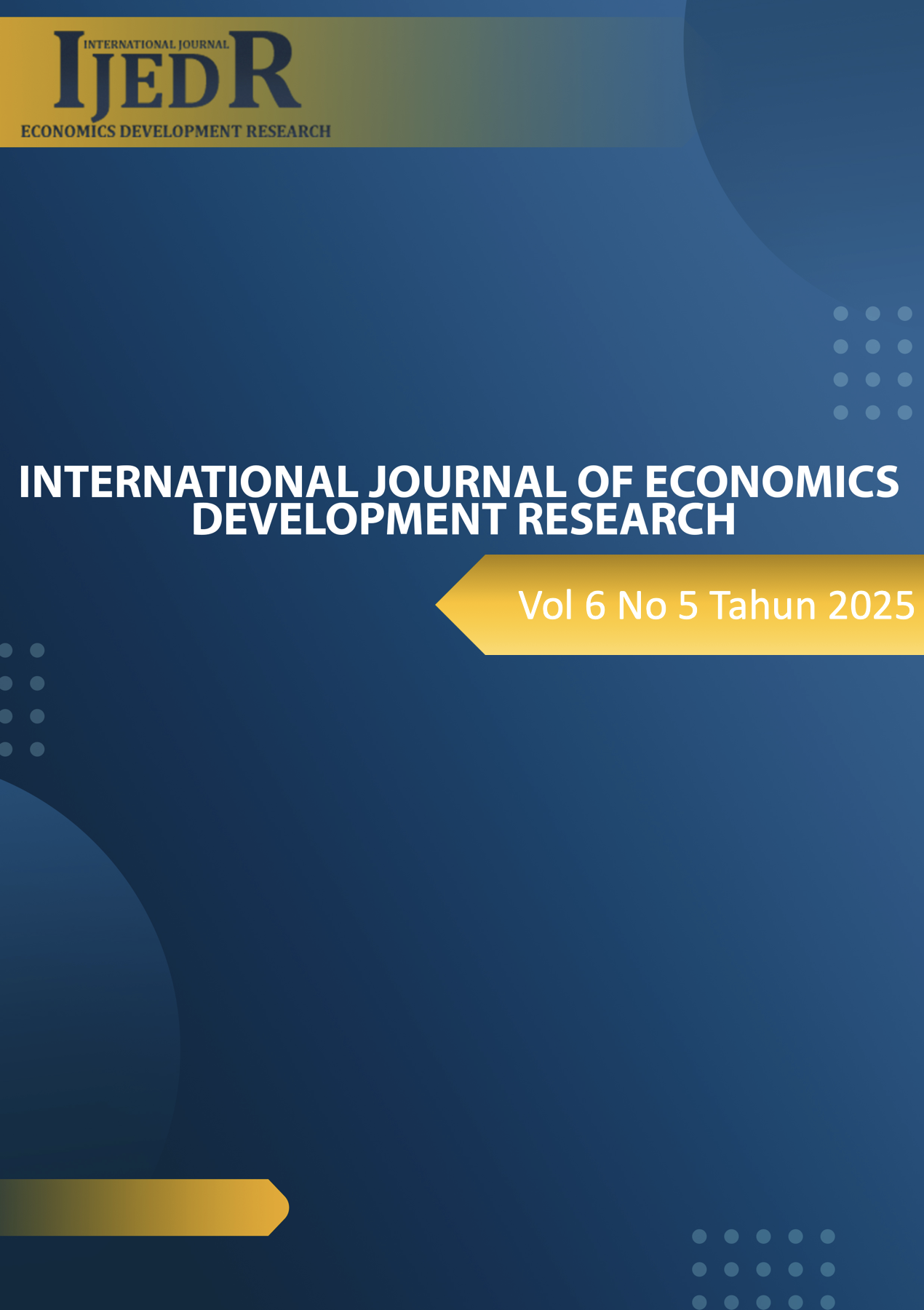The Moderating Role of Innovation Capability in the Relationship Between Corporate Social Responsibility and MSME Performance: A Case Study of PT Arutmin Indonesia Site Asamasam
DOI:
https://doi.org/10.37385/ijedr.v6i6.9125Keywords:
CSR, Innovation Capability, MSME Performance, Stakeholder TheoryAbstract
Micro, Small, and Medium Enterprises (MSMEs) strategically support the national economy. However, they still face various limitations, particularly regarding capital, technological access, and competitiveness. The company's Corporate Social Responsibility (CSR) program is believed to boost the capacity building of MSMEs, but its effectiveness depends on internal factors of the recipients, including their innovation capabilities. This study aims to analyse the role of innovation capability in moderating the influence of CSR on the performance of PT Arutmin Indonesia Site Asamasam fostered MSMEs. The research method uses a quantitative approach with a survey technique through questionnaires distributed to mentored MSME actors. Data analysis was conducted using Partial Least Squares (PLS) regression with the assistance of SmartPLS software. The research findings indicate that CSR has a positive but non-significant effect on MSME performance. Conversely, innovation capability was proven to dominate in improving MSME performance through product development, quality improvement, and business process efficiency. However, innovation capability has not been proven to strengthen the relationship between CSR and MSME performance. This finding confirms that the performance of MSMEs is more determined by internal innovation capacity than by external support through CSR programs alone.References
Anggraeni, M., & Sanaji, S. (2021). Pengaruh Penggunaan Media Sosial terhadap Kinerja Pemasaran Selama Pandemi Covid-19 dengan Mediasi Kemampuan Inovasi dan Kemampuan Branding (Studi pada Pelaku UMKM yang Menggunakan Media Sosial). Jurnal Ilmu Manajemen, 9(2).
Sevrani, K., & Bahiti, R. (2008). ICT in small and medium enterprises (Case of Albania). Epoka University Center for European Studies, 1, 184–207.
Carroll, A. B. (1979). A Three-Dimensional Conceptual Model of Corporate Performance. The Academy of Management Review, 4(4), 497–505. https://doi.org/10.2307/257850
Carroll, A. B. (1991). The Pyramid of Corporate Social Responsibility: Toward the Moral Management of Organizational Stakeholders. Business Horizons, 34(4), 39–48. https://doi.org/https://doi.org/10.1016/0007-6813(91)90005-G
Chong, H. G. (2008). Measuring performance of small-and-medium sized enterprises: The grounded theory approach. Journal of Business and Public Affairs, 2(1), 1–10.
Freeman, R. E. (2015). Stakeholder Theory. In Wiley Encyclopedia of Management (pp. 1–6). https://doi.org/https://doi.org/10.1002/9781118785317.weom020179
Ghozali, I., & Chariri, A. (2022). Teori Akuntansi (3rd ed.). Badan Penerbit Universitas Diponegoro.
Handayati, P., Hermawan, A., Rochayatun, S., Ratnawati, Nastiti, R. D., & Palil, M. R. (2023). The impact of corporate social responsibility on the performance of small and medium-sized enterprises can be mediated by innovation ability and learning orientation. International Journal of Management and Sustainability, 12(4), 635–650. https://doi.org/10.18488/11.v12i4.3560
Hult, G. T. M., Hurley, R. F., & Knight, G. A. (2004). Innovativeness: Its antecedents and impact on business performance. Industrial Marketing Management, 33(5), 429–438. https://doi.org/https://doi.org/10.1016/j.indmarman.2003.08.015
Hur, W.-M., Moon, T.-W., & Ko, S.-H. (2018). How Employees’ Perceptions of CSR Increase Employee Creativity: Mediating Mechanisms of Compassion at Work and Intrinsic Motivation. Journal of Business Ethics, 153(3), 629–644. https://doi.org/10.1007/s10551-016-3321-5
Kotler, P., & Lee, N. R. (2005). Corporate Social Responsibility: Doing the Most Good for Your Company and Your Cause. John Wiley & Sons, Inc.
Rijal, S., Sihombing, T. M., Akbar, I., Desembrianita, E., & Lubis, R. F. (2023). Peran Keunggulan Kompetitif, Inovasi Produk, dan Jaringan Bisnis terhadap Kinerja Ekonomi Daerah. Sanskara Ekonomi Dan Kewirausahaan, 1(03), 173–185. https://doi.org/10.58812/sek.v1.i03
Rosenbusch, N., Brinckmann, J., & Bausch, A. (2011). Is innovation always beneficial? A meta-analysis of the relationship between innovation and performance in SMEs. Journal of Business Venturing, 26(4), 441–457. https://doi.org/https://doi.org/10.1016/j.jbusvent.2009.12.002
Schumpeter, J., & Backhaus, U. (2003). The Theory of Economic Development. In J. Backhaus (Ed.), Joseph Alois Schumpeter: Entrepreneurship, Style and Vision (pp. 61–116). Springer US. https://doi.org/10.1007/0-306-48082-4_3
Wibisono, Y. (2007). Membedah Konsep dan Aplikasi CSR (Corporate Social Responsibility). 163. https://books.google.com/books/about/Membedah_konsep_aplikasi_CSR.html?hl=id&id=UaQBHwAACAAJ
Wicaksono, A., & Suryandari, D. (2021). The Analysis of Fraudulent Financial Reports Through Fraud Hexagon on Public Mining Companies. Accounting Analysis Journal, 10(3), 220–228. https://doi.org/10.15294/aaj.v10i3.54999





